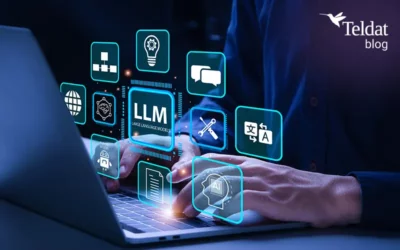 Now that the second decade of the 21st century is about to end, sustainability and digitalization have become challenges all city areas must face. With this in mind, the 40th FITUR edition, which just took place in Madrid, has greatly focused on the need to incorporate new technologies to tourist destinations and turn them into “Smart Destinations”.
Now that the second decade of the 21st century is about to end, sustainability and digitalization have become challenges all city areas must face. With this in mind, the 40th FITUR edition, which just took place in Madrid, has greatly focused on the need to incorporate new technologies to tourist destinations and turn them into “Smart Destinations”.
So as to meet the above mentioned challenges, Smart Destinations are adding technologies like virtual reality, robotics, artificial intelligence – AI -, 3D modelling and Big Data to their tourist offerings. The goal is to turn trips into wholesome touristic experiences.
IoT devices
Tourist trips have many context-related data – location, environmental factors, meteorological info, etc.. As a result, IoT devices, like sensors or probes, have appeared to provide relevant information to tourists. Giant screens, which are fast becoming the new smart tourist information offices, provide content that is tailored to each user thanks to their ability to interact with them. This information is linked to other network services, like the apps the tourist will use while travelling.
In addition to providing data before, during and after the trip, these services are a great source of information for Smart Cities, feeding the databases to be used by Big Data tools.
New generation communications
Nowadays, the new technologies we have been taking about are being implemented through small, limited, and well-defined projects that are able to overcome the barriers present in communication infrastructures. These will likely come down once 5G technology is generally available, due to two factors:
• The speed of communications will contribute to the appearance of virtual assistants, in addition to the use of real-time image recognition technologies.
• The chance to connect up to one million devices per square kilometer allows for many IoT devices to be incorporated, thus generating a far more tailored tourism experience.
In addition, smart destinations provide Wi-Fi access both indoors and outdoors (especially in places with a higher number of visitors).
Open Data and digitalization of tourist destinations
Another big paradigm within Smart Tourism has to do with data sources, which are generally very disperse. On the one hand, there are public data sources that provide information about tourist spots – cultural, sports-based, wildlife-related…. This information is offered by highly knowledgeable staff that, often, do not have the necessary technological skills. The result is very rich but very poorly structured content, in many cases not even digitalized.
On the other hand, we find tourism-oriented companies that specialize in different fields: accommodation, transport, catering, or ancillary services. They are usually far more digitalized, but the technology is very dispersed and makes integration difficult.
In this case, the solution is to create an open data system, defined here a few weeks ago, that integrates all public and private data sources and makes the information available to the user. The goal is to create new services that bring an added value to the destination itself.
Sustainability and Smart Tourism
The use of tourism-related technologies will increase the sustainability of tourist destinations thanks to the following factors:
• The proliferation of new services will allow for a bigger deseasonalization and help reduce overcrowding.
• The use of proprietary urban services in Smart Cities will foster energy efficiency and improve the consumption trends connected with utilities.
• Smart City technologies are being exported to smaller towns, thus reducing the depopulation of rural environments, and creating new services and professional opportunities.
At Teldat, we are developing new technologies for Smart Cities, among which we include Smart Grid.

























